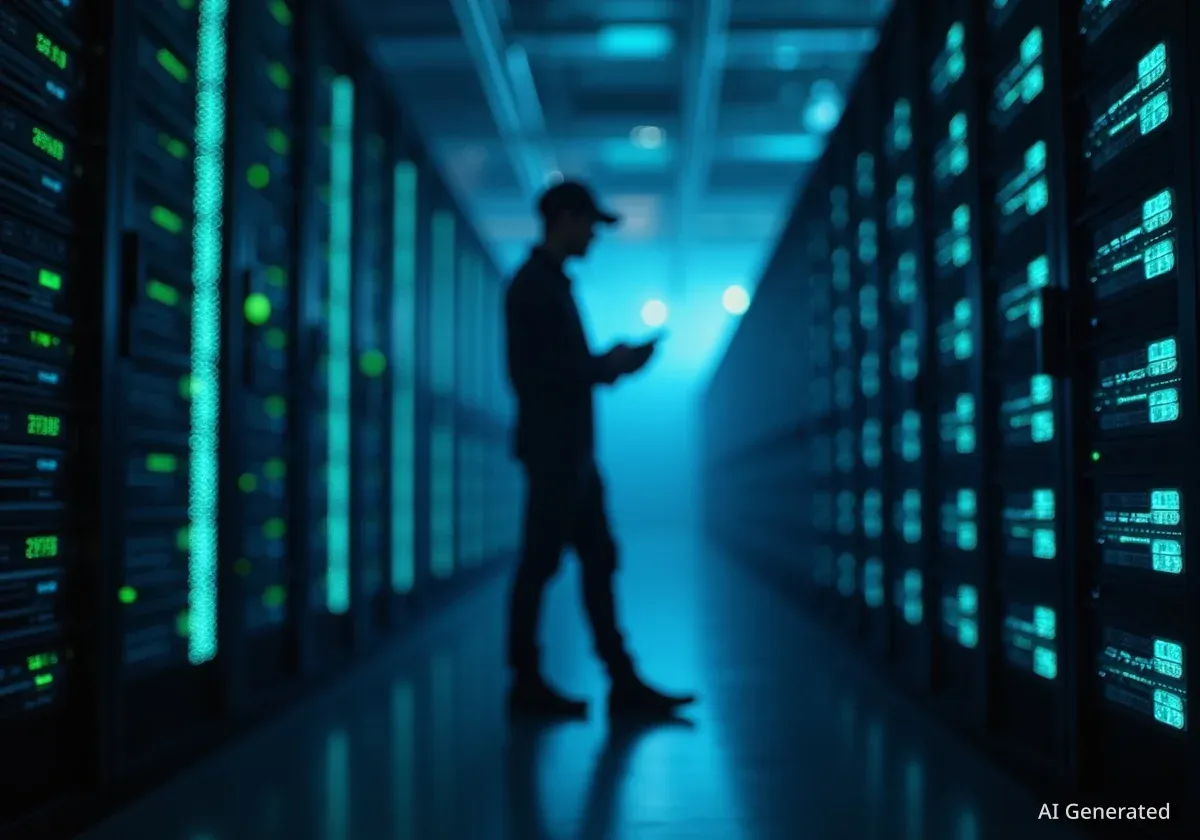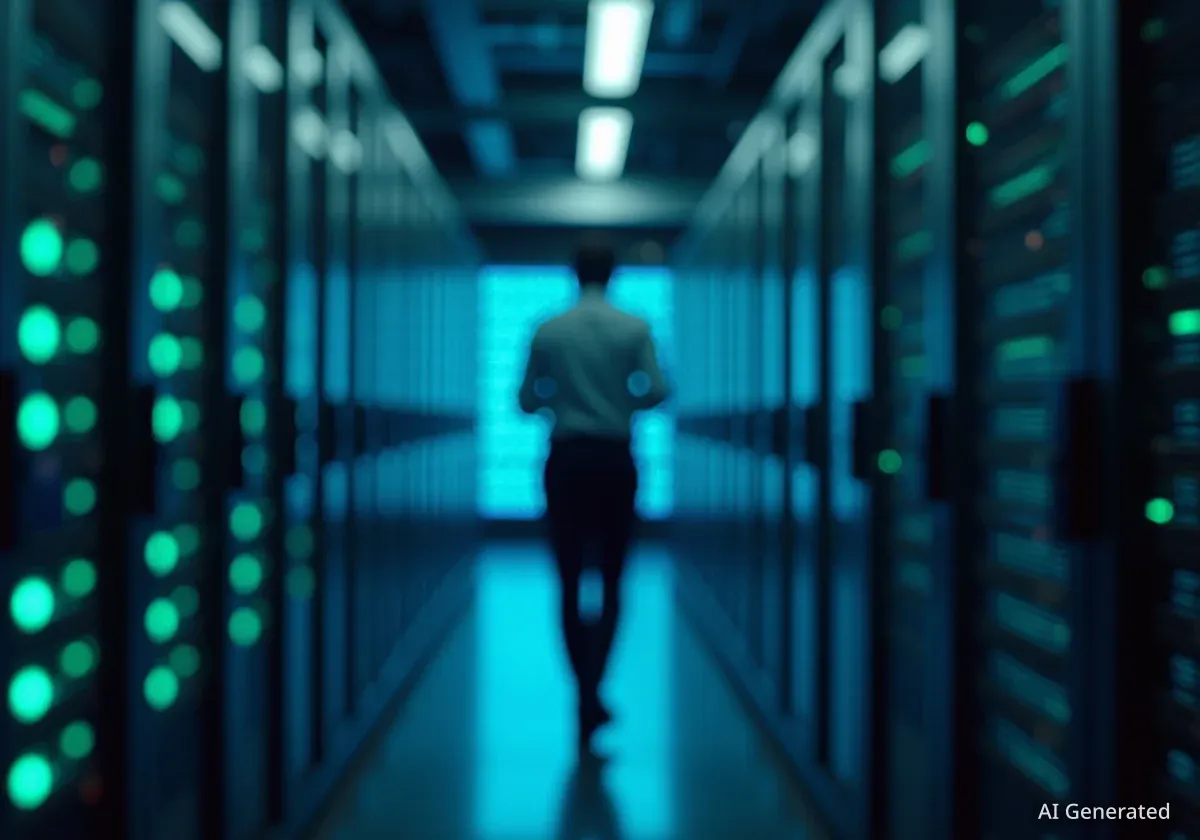A massive wave of investment in artificial intelligence by the world's largest technology companies is creating a powerful economic cycle, driving stock market records and fueling growth in sectors far beyond software. Recent announcements from Meta, Microsoft, and Google confirm that their spending on AI infrastructure is not only continuing but accelerating, with billions of dollars committed to building the future of the technology.
This capital injection is so significant that it has started to function as a self-sustaining economic engine. The investments are boosting the valuations of chipmakers and infrastructure companies, creating a feedback loop that continues to propel the market forward, even as questions about widespread job creation remain.
Key Takeaways
- Major tech firms like Meta, Microsoft, and Google are escalating their multi-billion dollar investments in AI infrastructure.
- This spending spree is creating a "circular funding" model, where investments in AI startups flow back to the tech giants for cloud services and chips.
- The AI boom is benefiting traditional industries, with companies like Caterpillar seeing increased demand for construction equipment to build data centers.
- While driving stock market growth, particularly for companies like Nvidia, the direct impact on broader job creation is not yet clear.
The Scale of the AI Investment Boom
The race to achieve dominance in artificial intelligence has prompted unprecedented levels of capital expenditure from the industry's largest players. These companies, often referred to as "hyperscalers," are locked in a competition to develop the most powerful AI models, which requires enormous computational resources. This has led to bullish declarations on their spending plans.
Meta, Microsoft, and Google have all signaled their intent to continue pouring billions into the necessary hardware and infrastructure. This isn't just about software development; it's about building the physical foundation for the next generation of technology. The demand for specialized AI chips and the data centers to house them is insatiable.
Market Impact
The immense demand for AI hardware has propelled companies like Nvidia to new heights, with its market valuation recently surpassing $5 trillion. This reflects the central role its chips play in powering AI systems.
A Circular Economic Model Emerges
A unique financial dynamic has taken shape within this boom. The major tech corporations are not just spending on their own infrastructure; they are also heavily investing in promising AI startups. This strategy serves a dual purpose: it allows them to gain a foothold in emerging technologies while simultaneously creating new customers.
How Circular Funding Works
The process is straightforward but powerful. A tech giant like Microsoft or Amazon invests billions into an AI startup. That startup, in turn, uses a significant portion of the investment to pay for essential cloud computing services and specialized AI chips—often purchased from the very company that invested in them or its key partners.
This creates a closed-loop system where capital flows from the tech giants to startups and then circles back, bolstering the revenue streams of the hyperscalers' cloud and hardware divisions. While this model accelerates innovation, it also raises questions about market concentration and the dependence of new companies on their large corporate backers.
A New Name for an Old Practice?
Some analysts view this circular funding model as a modern version of established business practices, where large companies invest in their supply chain or ecosystem to foster growth and secure future business. However, the scale and speed of this dynamic in the AI sector are unprecedented.
The Ripple Effect into Traditional Industries
The AI boom's economic impact extends far beyond Silicon Valley. The digital infrastructure required for AI is built on a physical foundation of steel, concrete, and heavy machinery. This has created a surge in demand for companies in traditional sectors, demonstrating the wide-reaching effects of the tech investment.
Companies like Caterpillar, a manufacturer of construction and mining equipment, have reported increased demand directly linked to the construction of new data centers. These massive facilities, which house the servers and processors that run AI models, require extensive site preparation and construction, driving sales for heavy machinery.
"The burgeoning AI economy is fueling insatiable demand for the modern form of picks and shovels — the types of AI chips that Nvidia designs — and for the actual picks and shovels needed to build that new capacity."
This connection illustrates how a new-school technology boom can directly benefit an old-school industrial company. The AI revolution isn't just happening in the cloud; it's being built on the ground, creating tangible economic activity in the physical world.
The Job Market Question
Despite the massive capital flows and soaring stock valuations, the AI boom has not yet translated into widespread job growth. The investments are heavily focused on capital-intensive areas like hardware and infrastructure rather than labor. While specialized roles in AI research and engineering are in high demand, the broader impact on employment remains a key unknown.
The current phase is centered on building capacity. The economic logic suggests that once this infrastructure is in place, new applications and services will be built upon it, which could lead to job creation in the future. However, there is also ongoing debate about the potential for AI to automate existing jobs.
For now, the economic narrative is dominated by corporate spending and market performance. The finish line in the race for AI supremacy is not yet in sight, and the industry's leaders have made it clear they are prepared to continue spending whatever it takes to win, shaping the global economy in the process.





